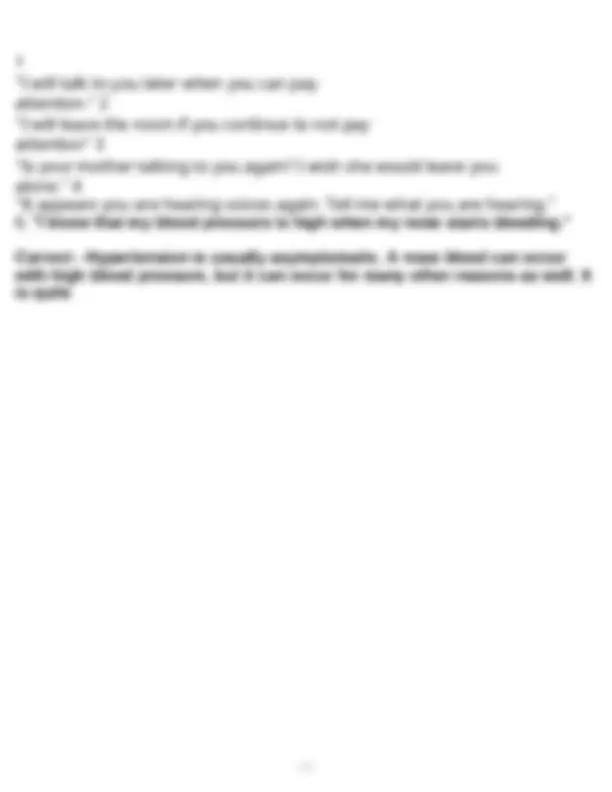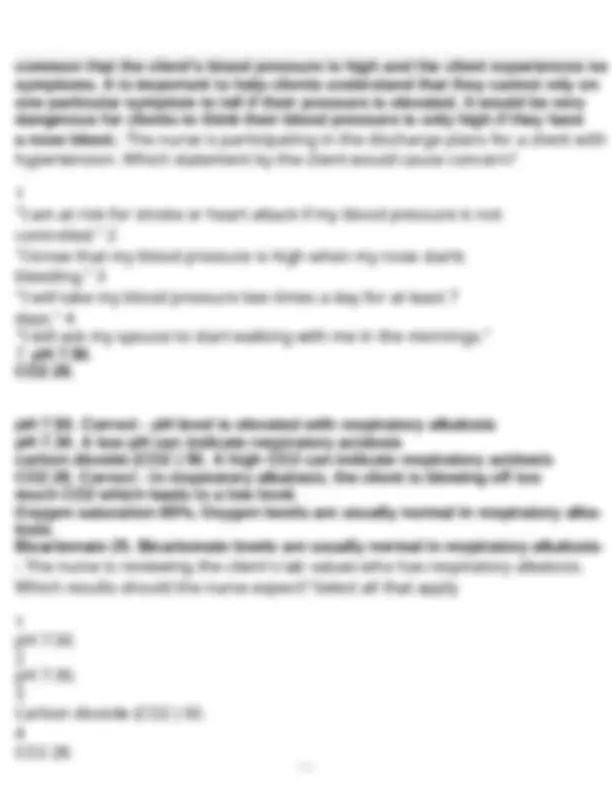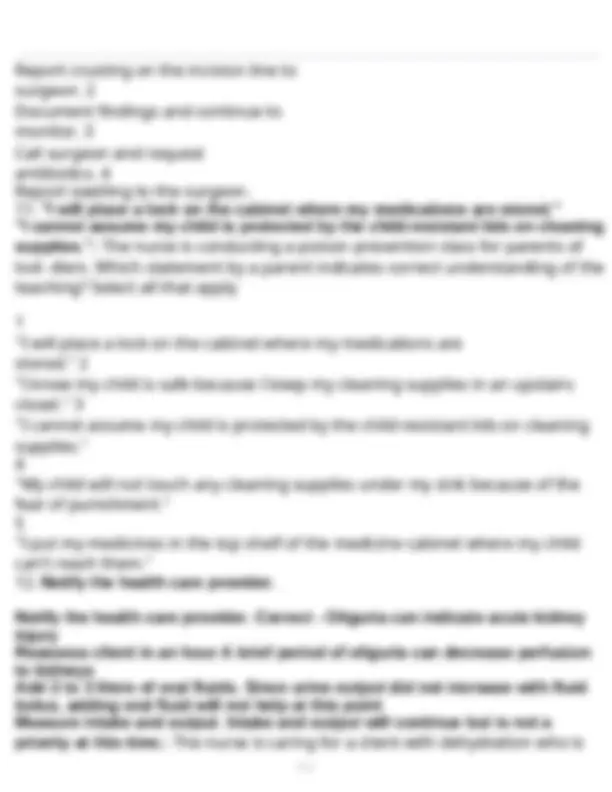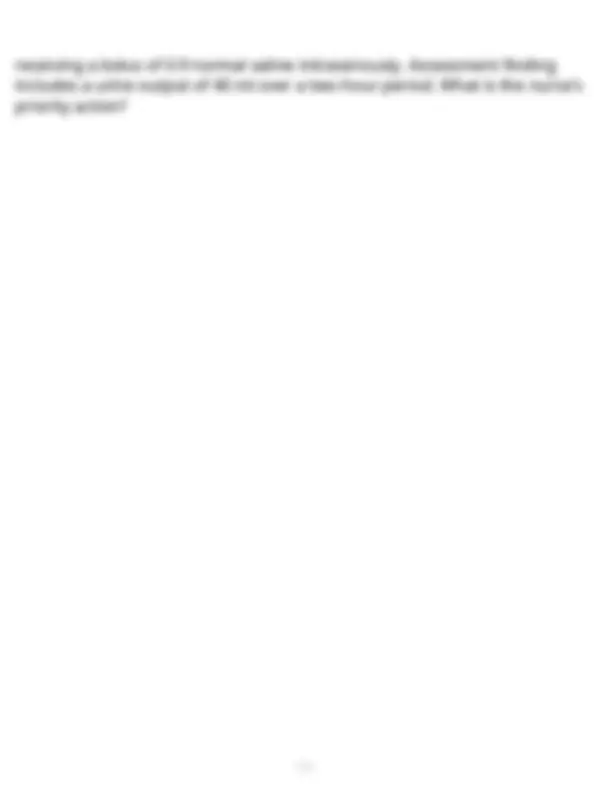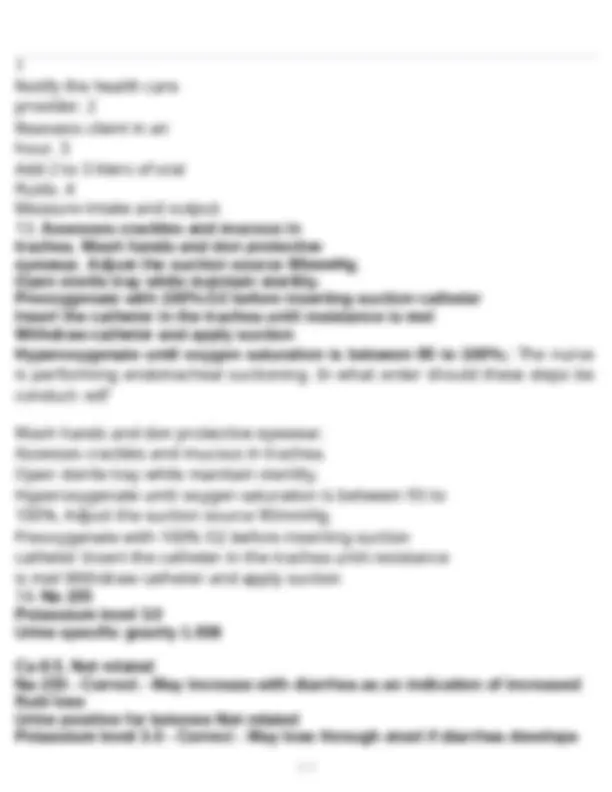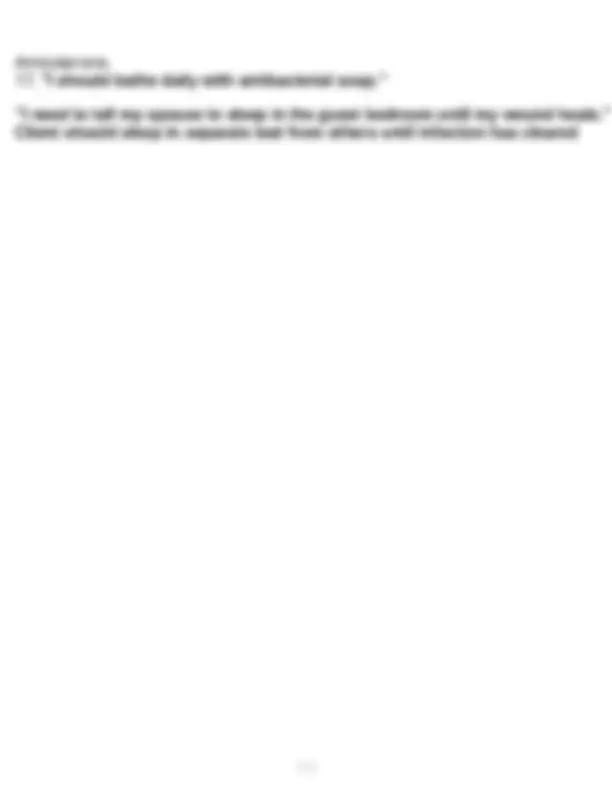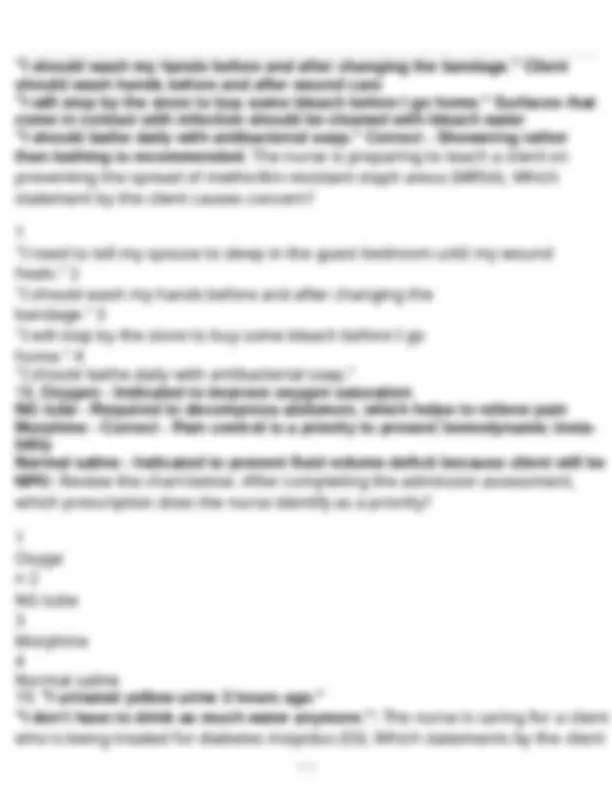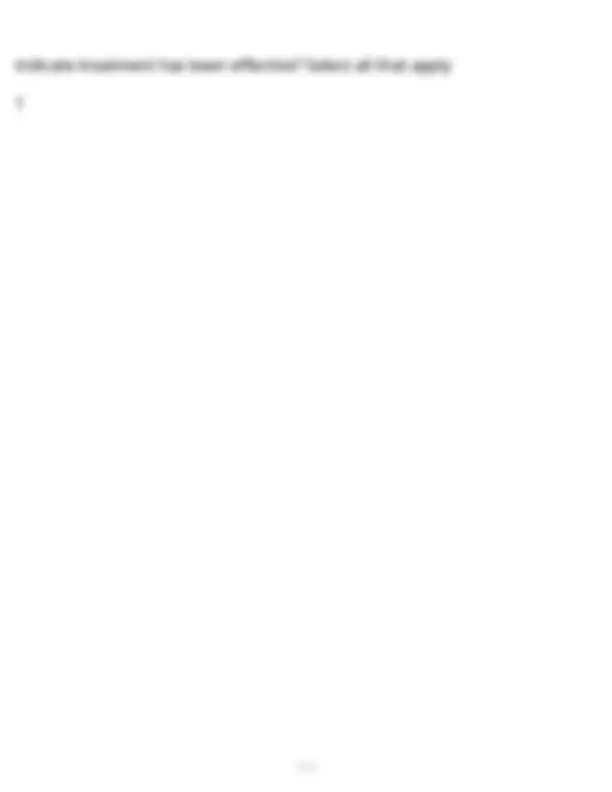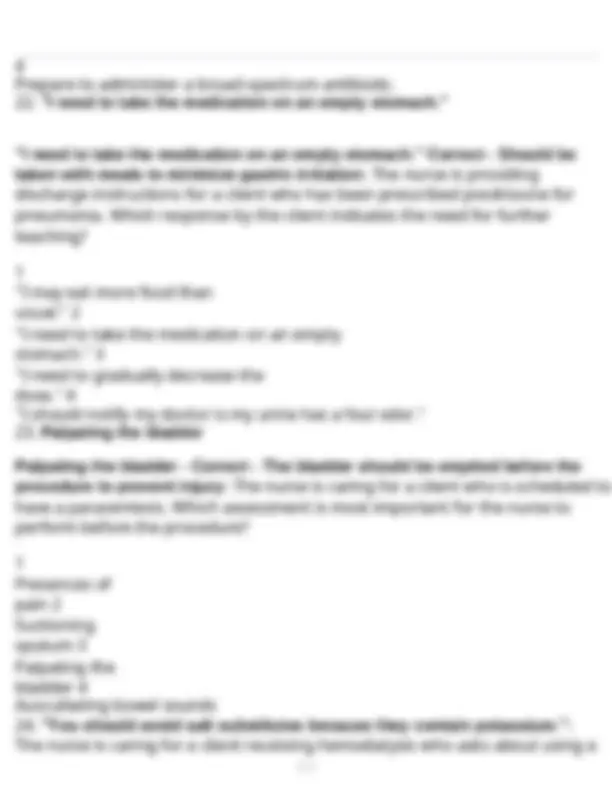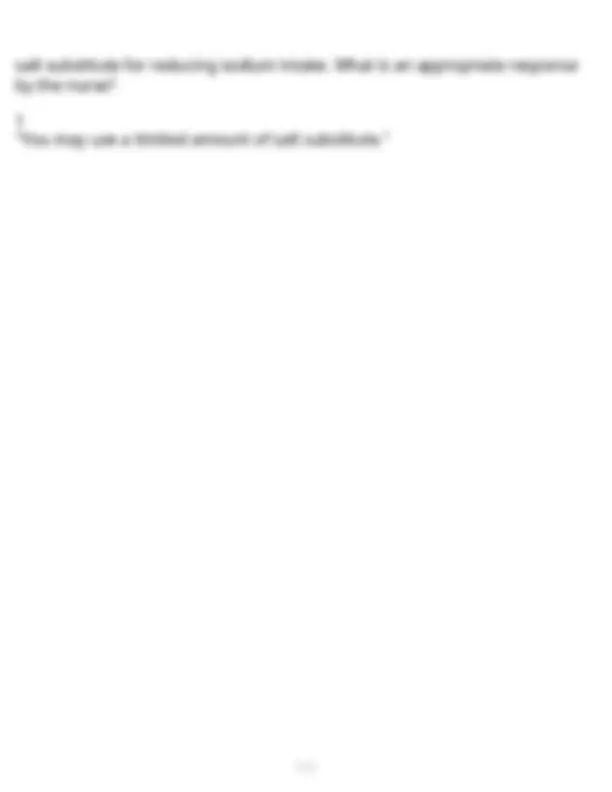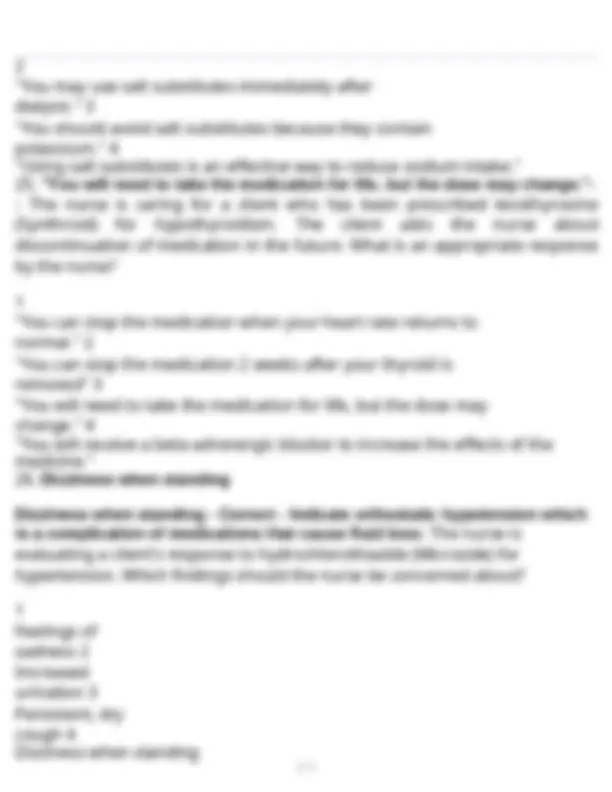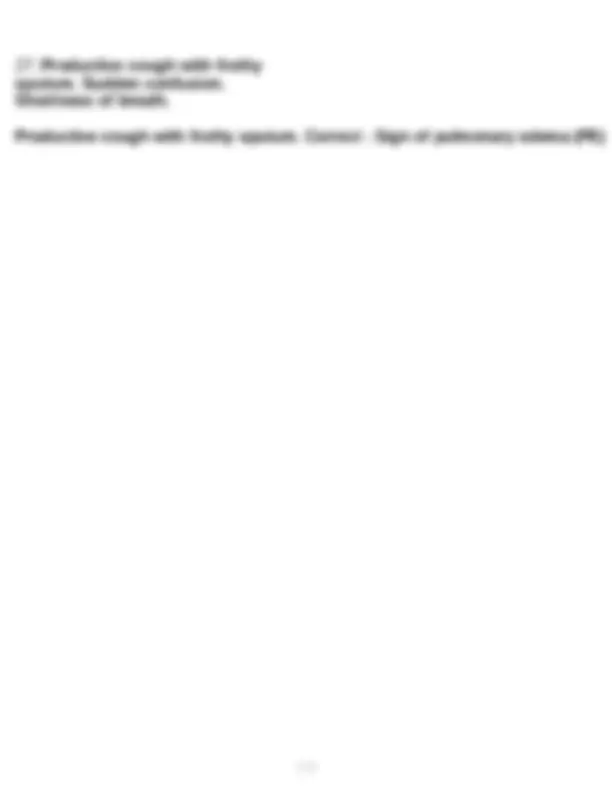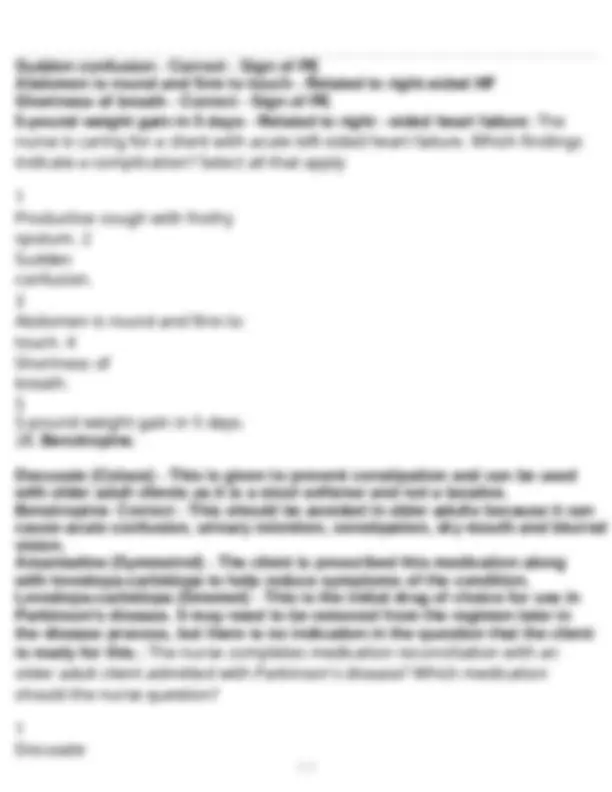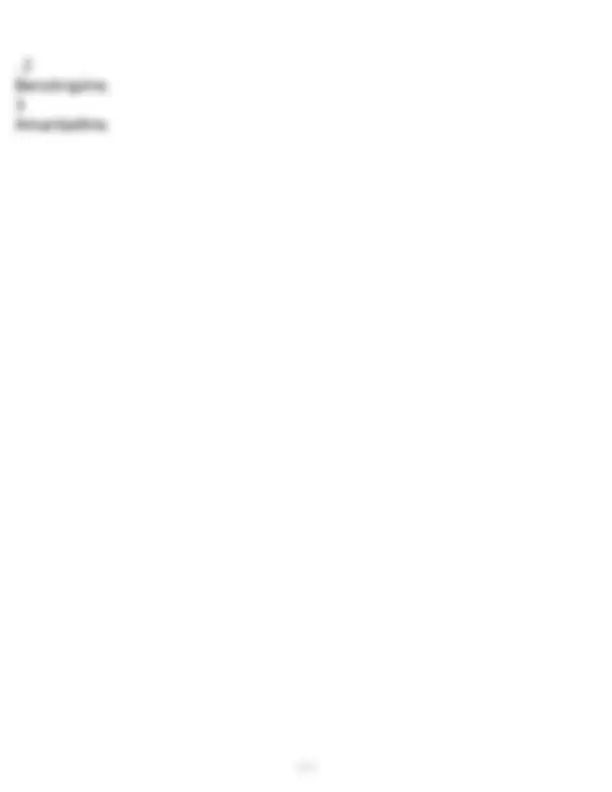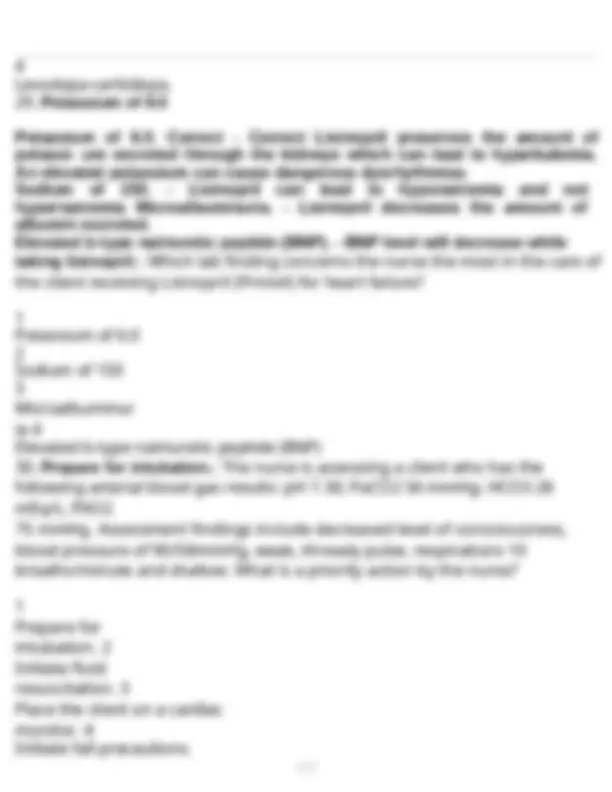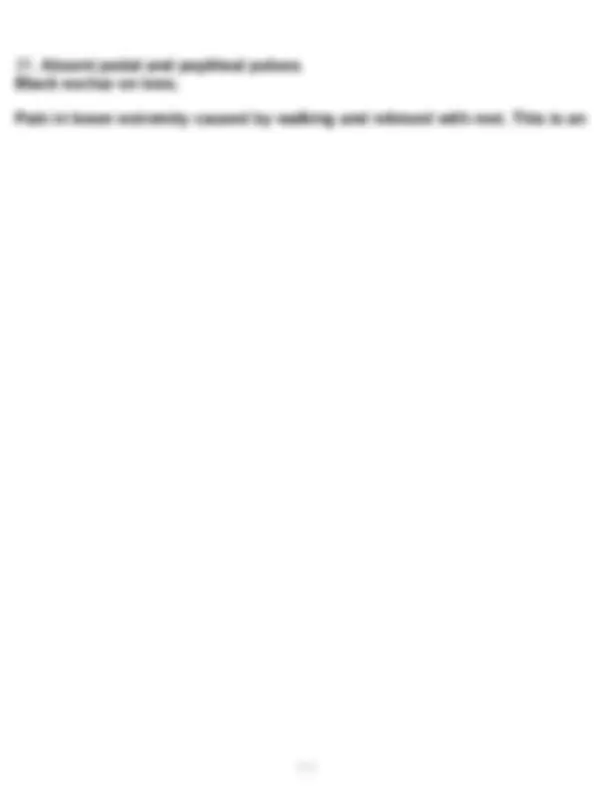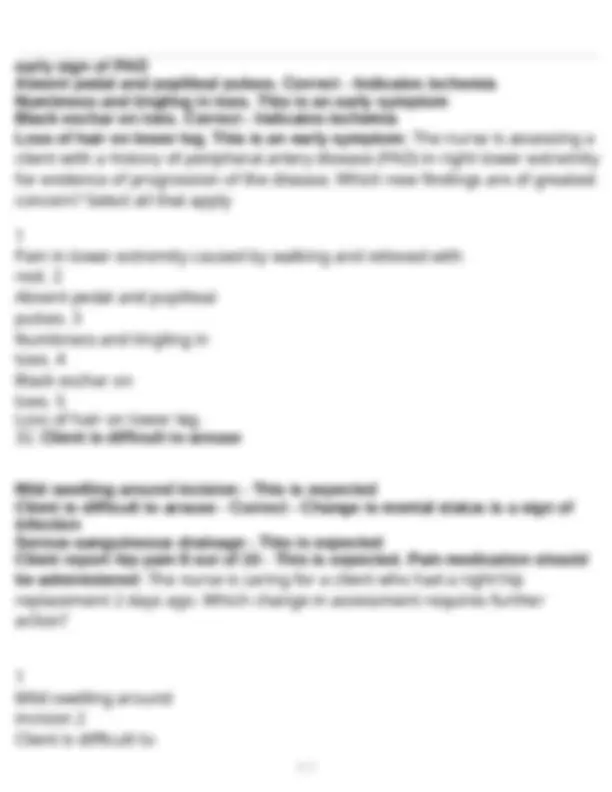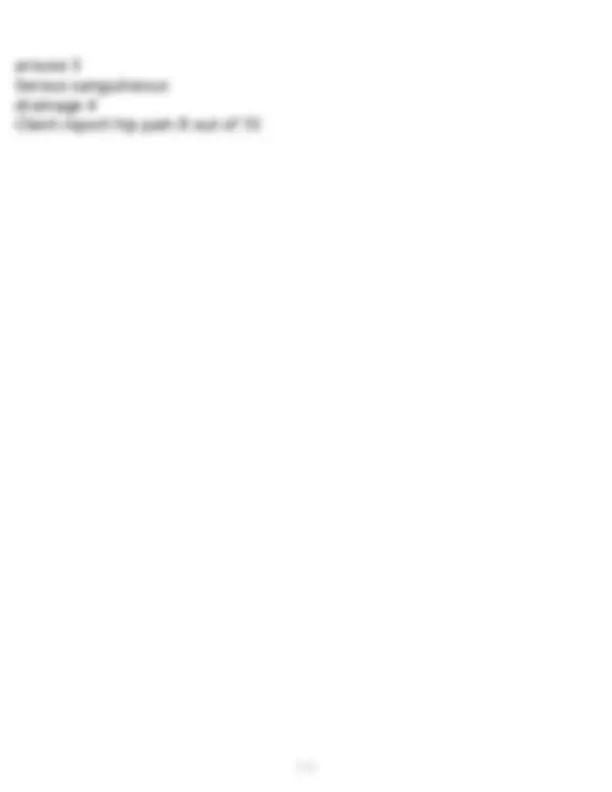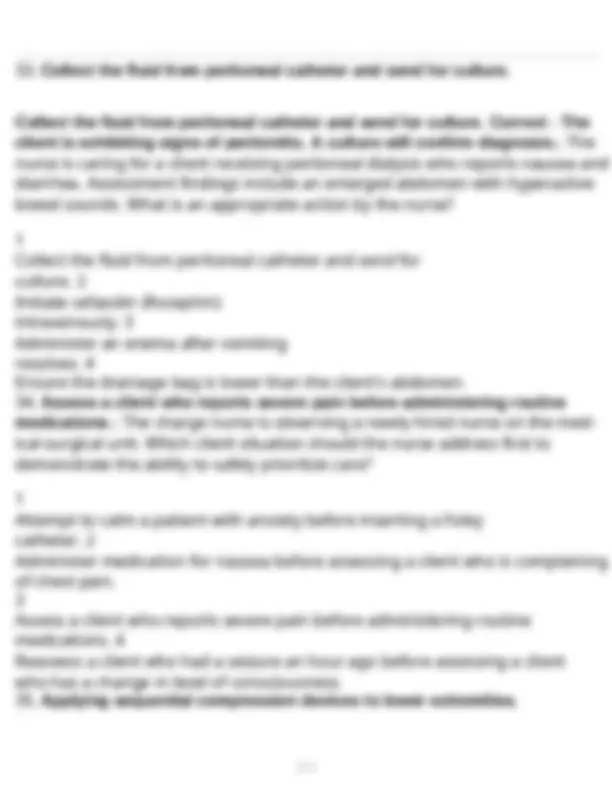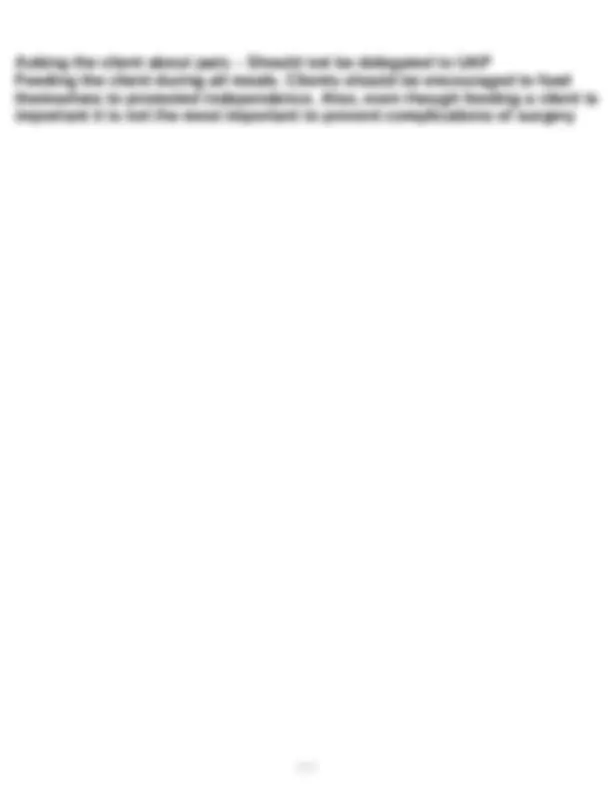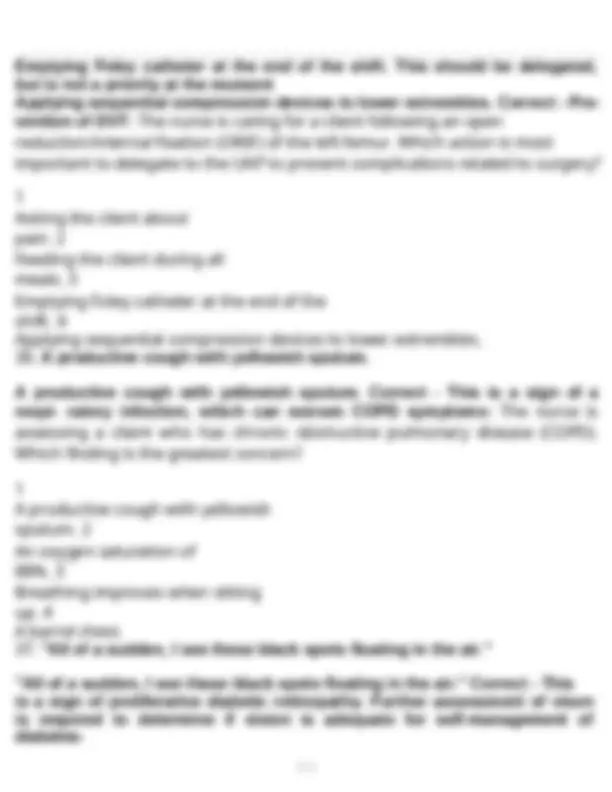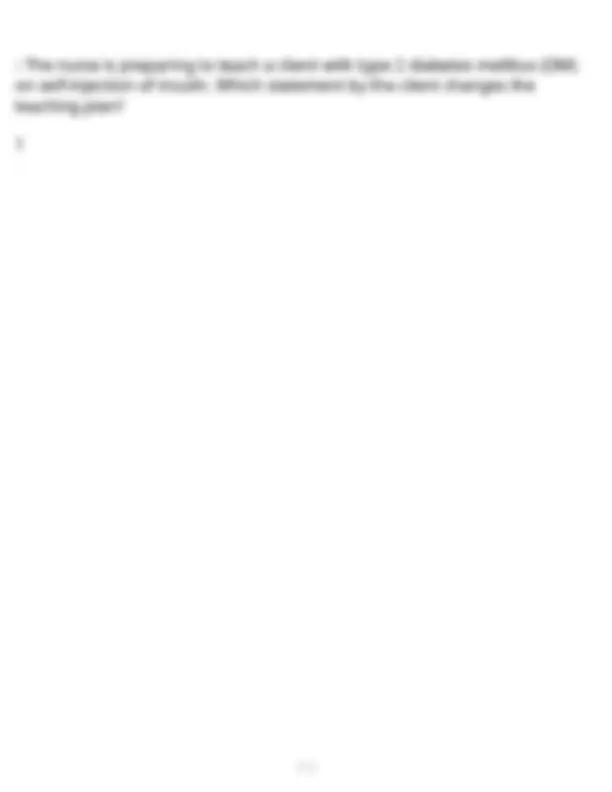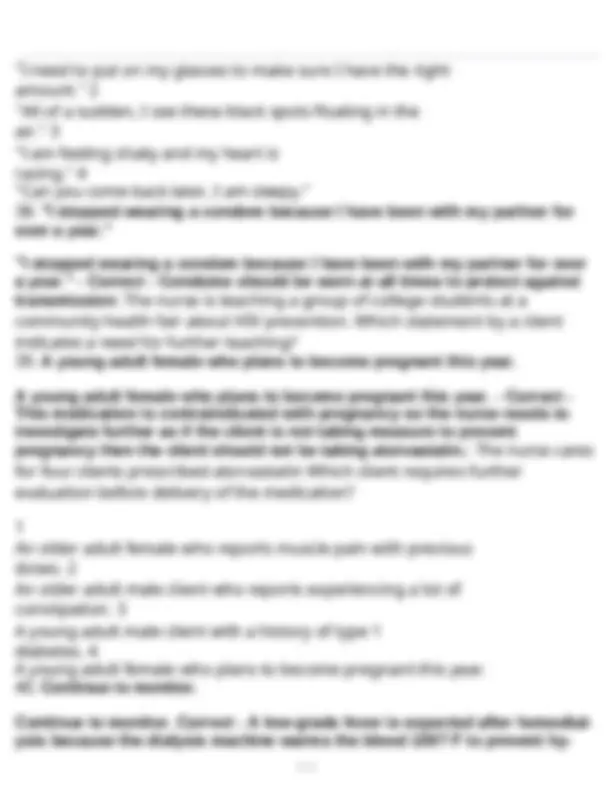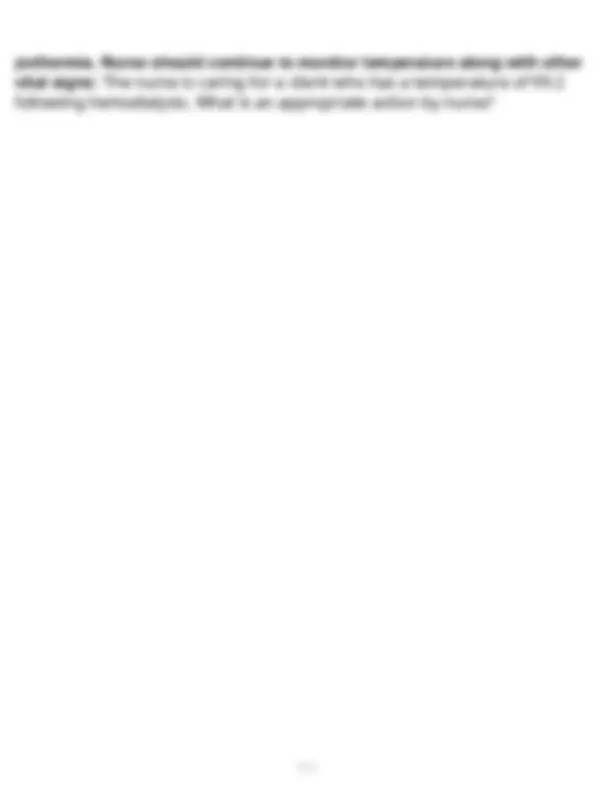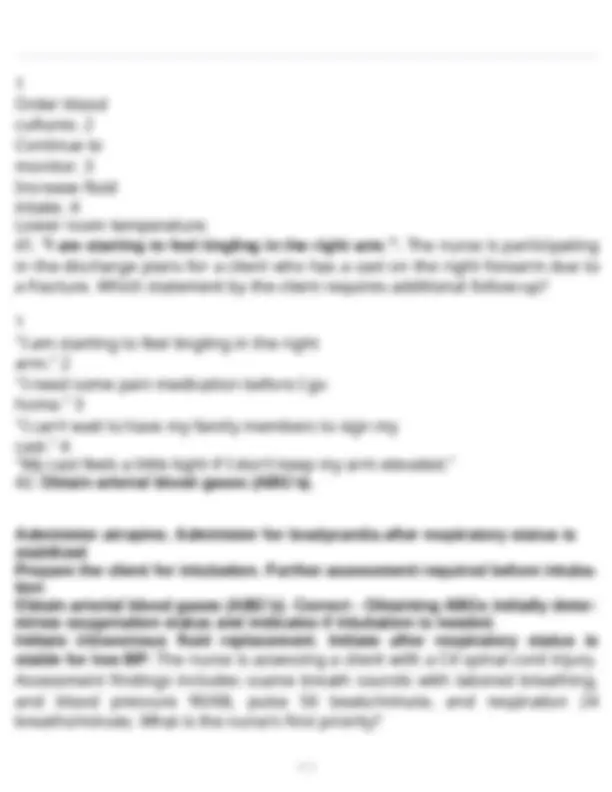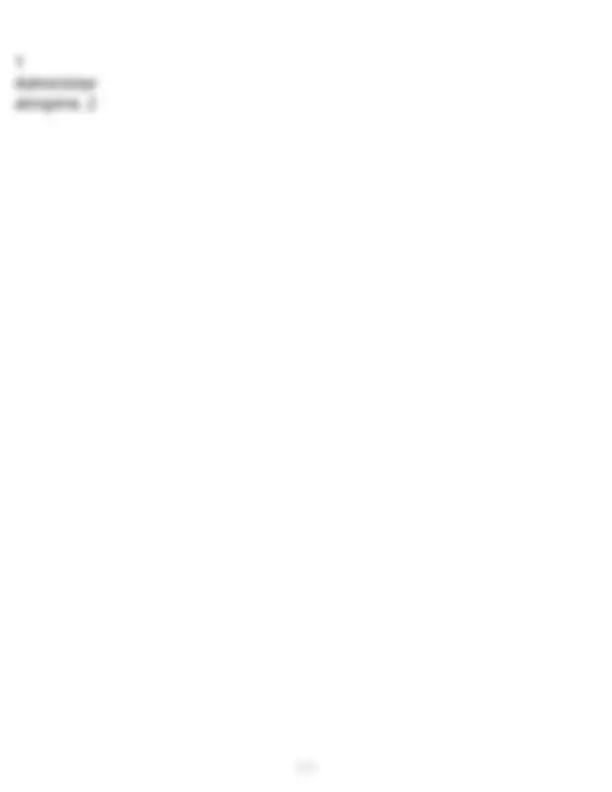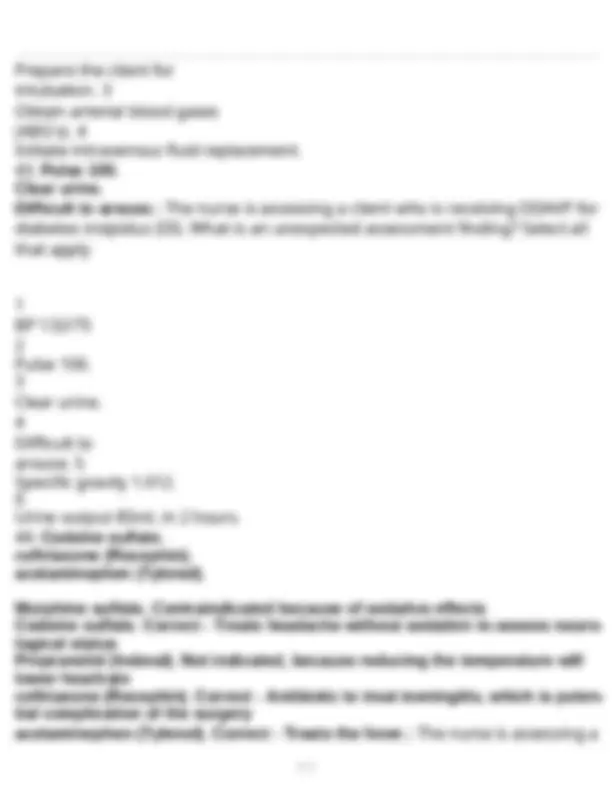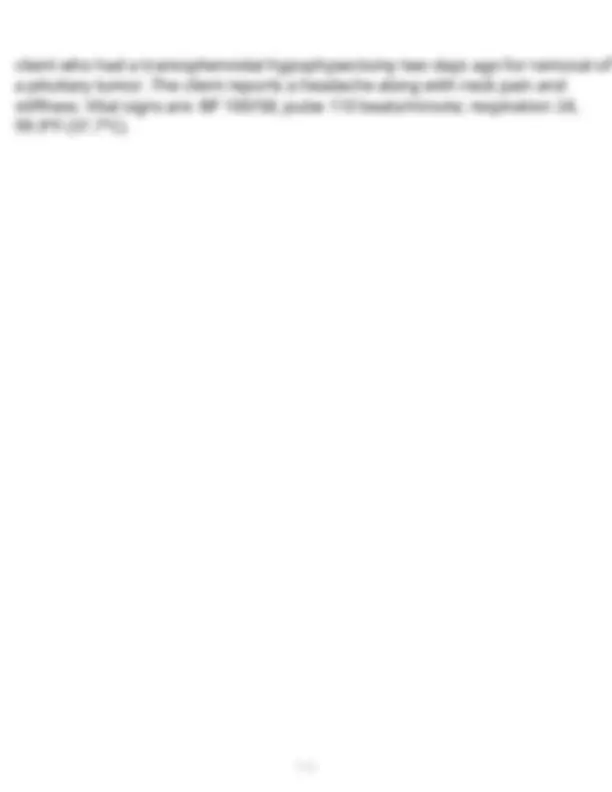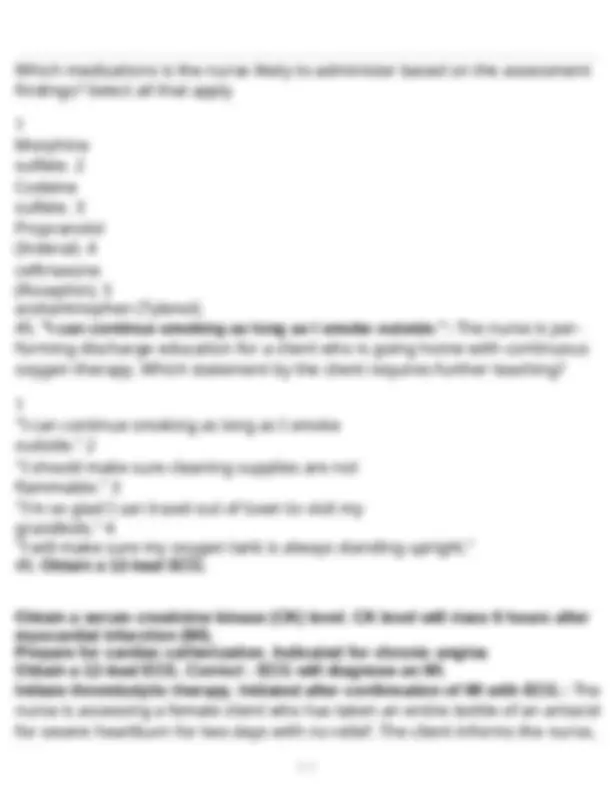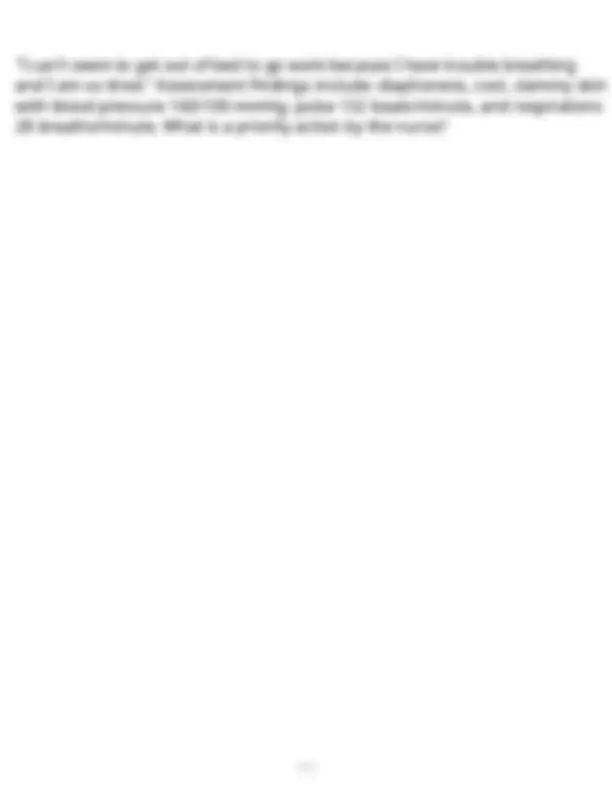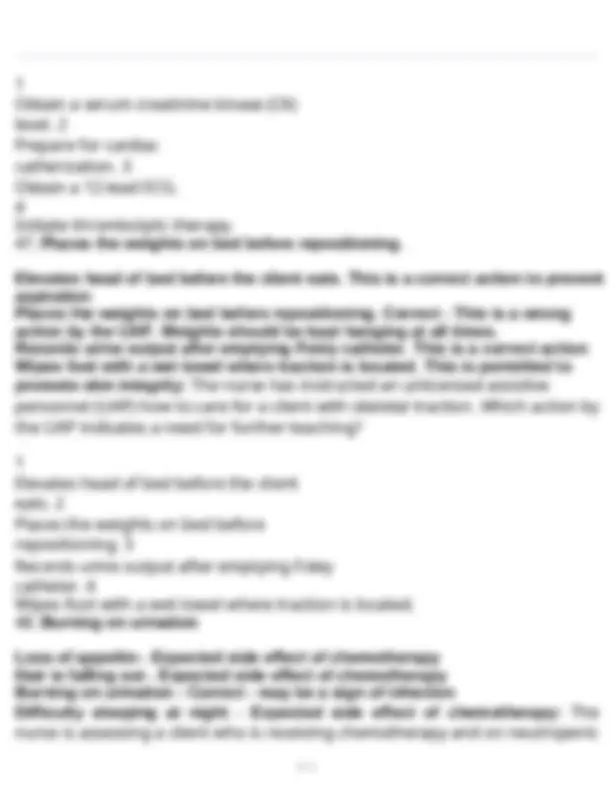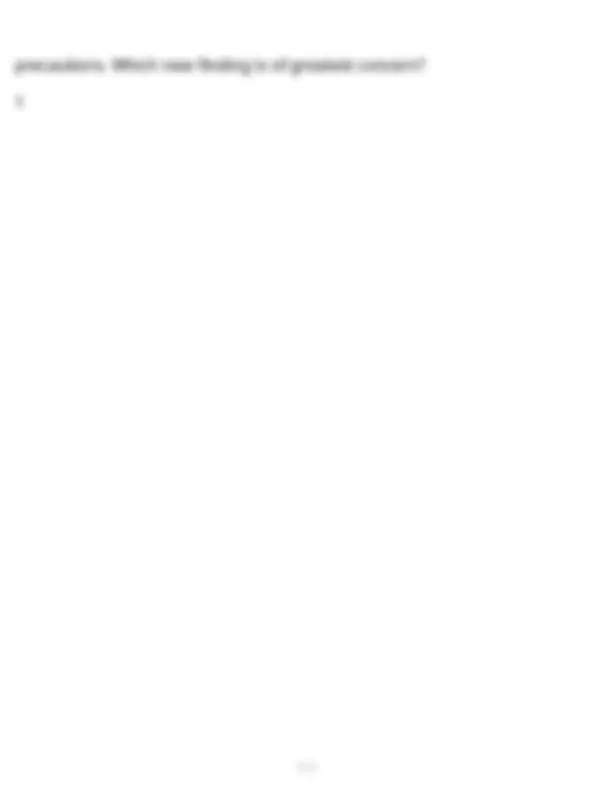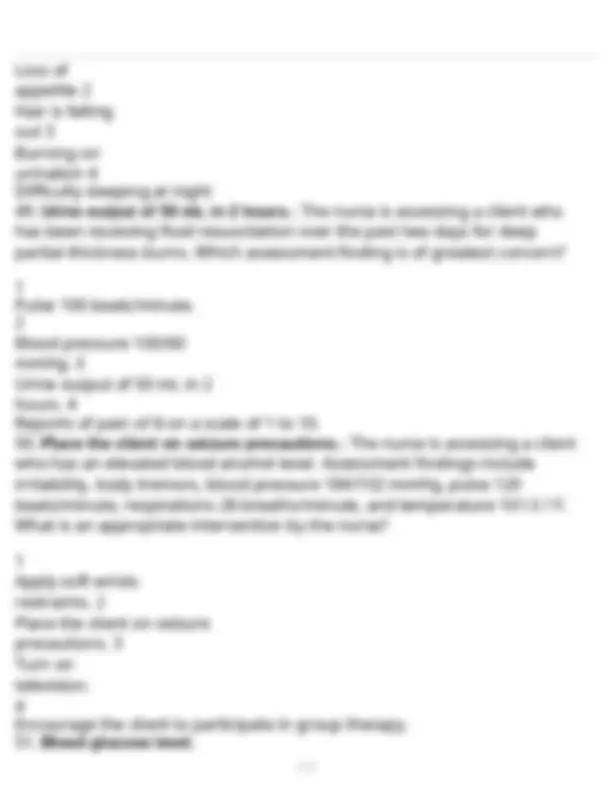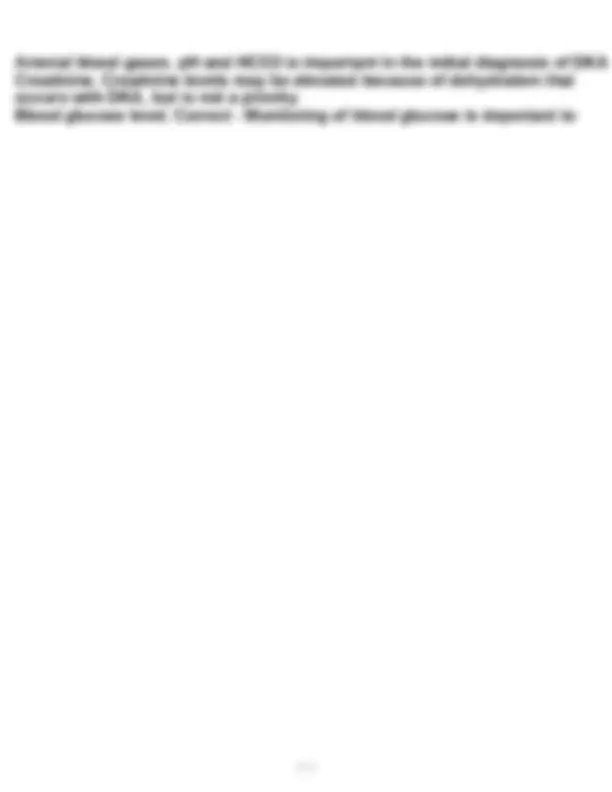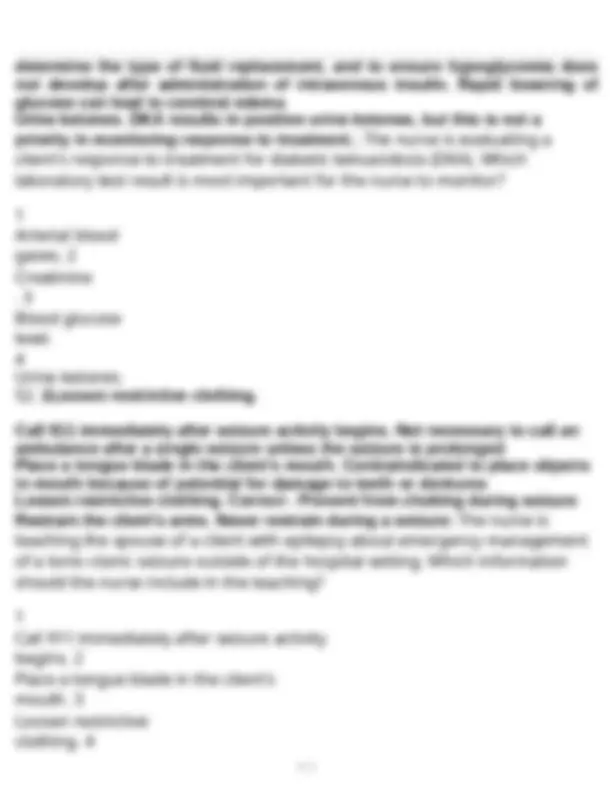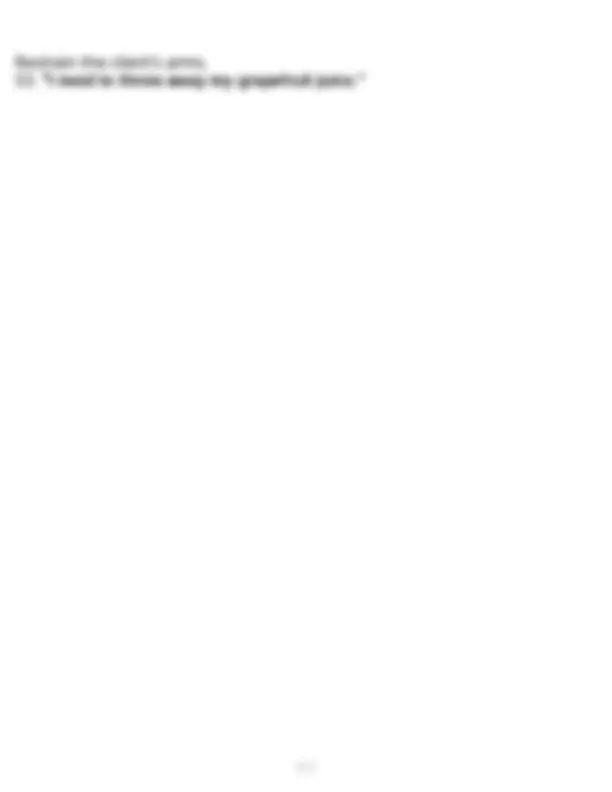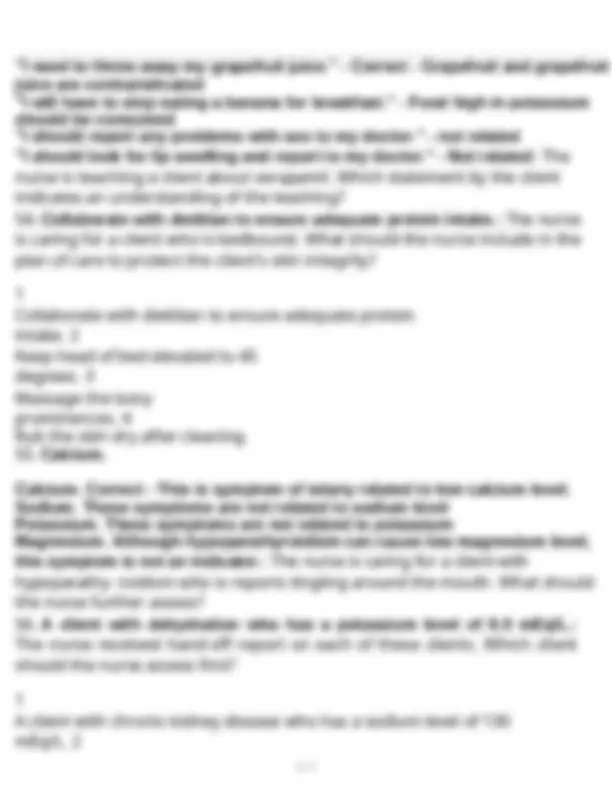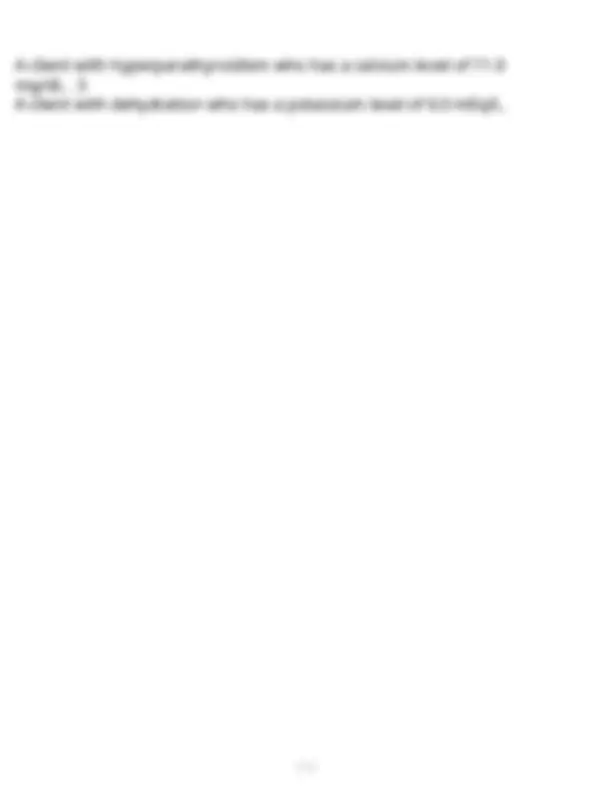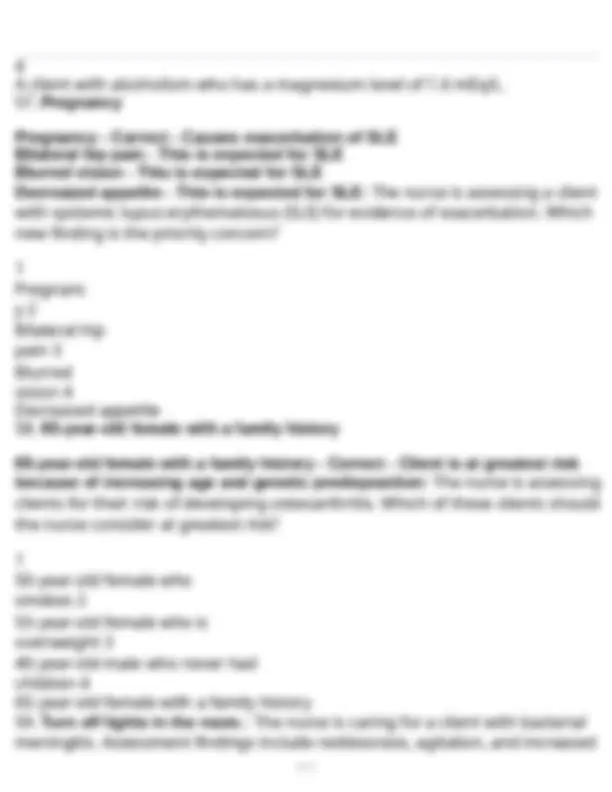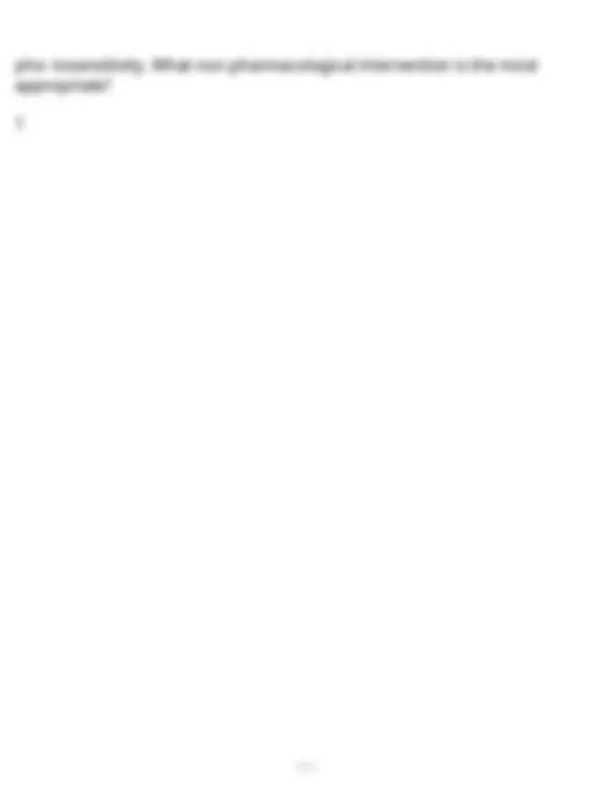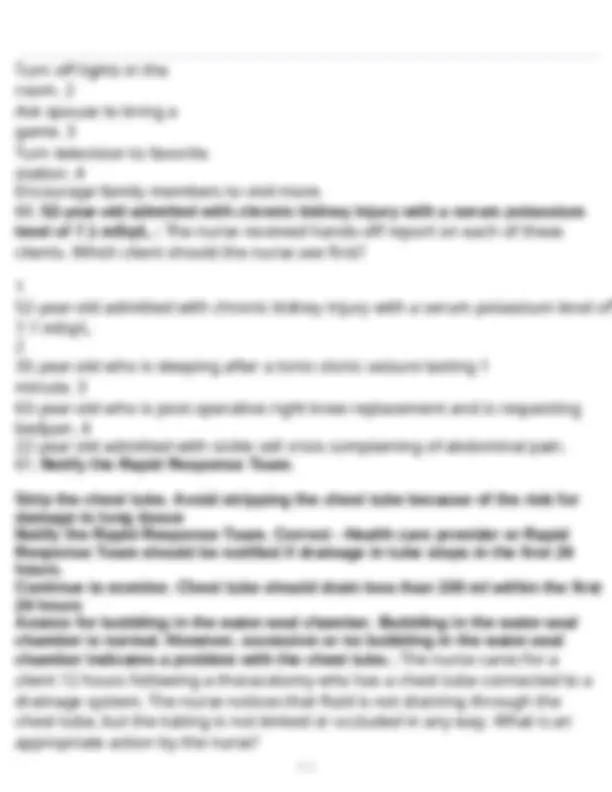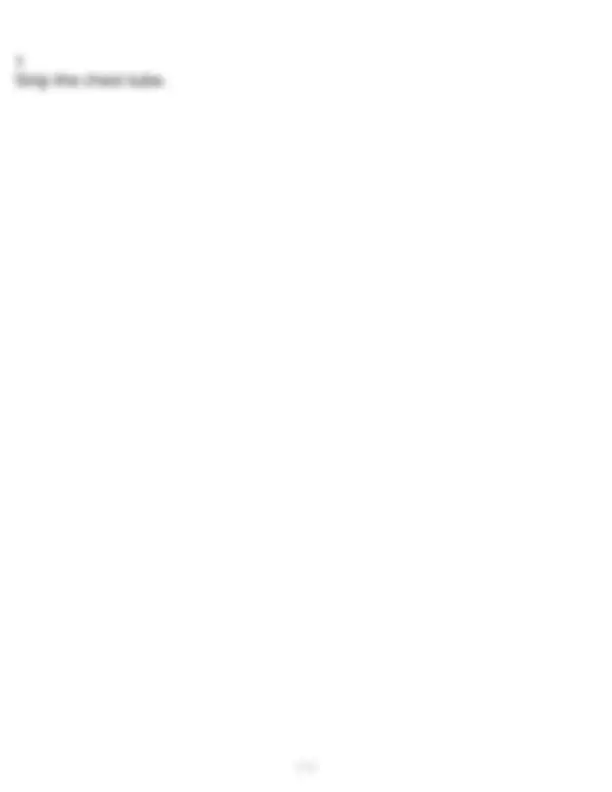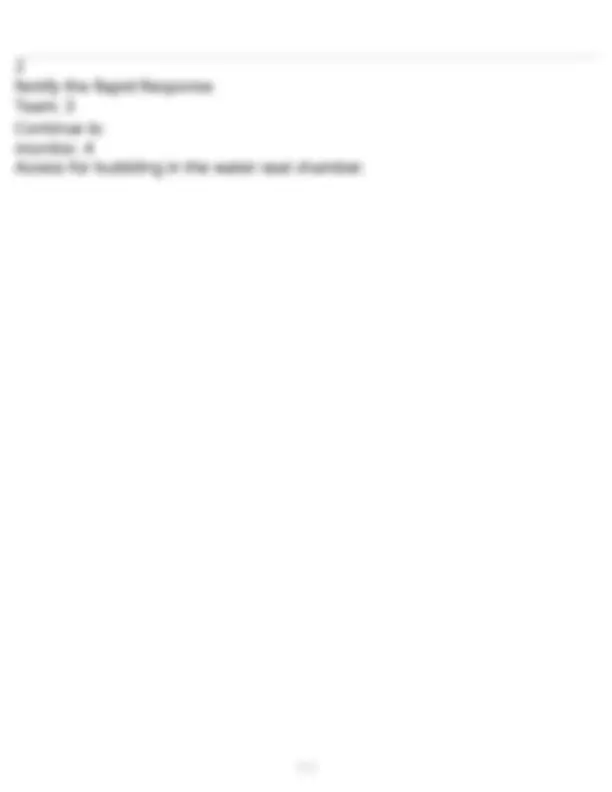Download CJE PRACTICE EXAM 1 QUESTIONS WITH ANSWERS and more Exams Medicine in PDF only on Docsity!
CJE PRACTICE EXAM 1 QUESTIONS WITH ANSWERS
- Yellowish sclera. Possible side effect related to liver damage: The nurse is caring for a client with tuberculosis who is receiving isoniazid and rifampin for tuberculosis. Which adverse effect should the nurse be most concerned with? 1 Blurred vision. 2 Yellowish sclera. 3 Nausea and vomiting. 4 Decreased urine output.
- Acute confusion Dry cough - Vague sign Acute confusion - Correct - sign of infection in an older adult Increased temperature - Older adult may not exhibit normal signs of infection Purulent drainage from incision - Older adult may not exhibit normal signs of infection: What would the nurse expect to find in the care of an 80-year-old client who is experiencing a complication after a right knee replacement? The patient is post-op day 1. 1 Dry cough 2 Acute confusion 3 Increased temperature 4 Purulent drainage from incision
- 48-year-old African-American male who is obese and father and mother have type 2 DM.: Which of these clients should the nurse consider at greatest risk for developing type 2 diabetes mellitus? 1 48-year-old African-American male who is obese and father and mother have type 2 DM. 2 50-year-old male hemoglobin A1C of 5.5% during a routine physical examination. 3 A 30-year-old female who delivered a 9-pound baby. 4 A 62-year-old male with an elevated triglyceride level.
- "You should add a thickener all liquids and make sure he sits upright while eating.": The nurse is assessing a client with Parkinson's disease who has been admitted to the hospital because of significant weight loss. Assessment data reveals a masklike facial expression and slurred speech. A swallowing evaluation reveals some difficulty swallowing. The client's daughter asks the nurse, "How am I supposed to feed him at home?" What is an appropriate response by the nurse? 1 "He will be scheduled for surgery to have a feeding tube placed". 2 "It's best to feed him only three meals a day to reduce the chance of choking." 3 "Make sure he drinks all liquids through a straw and recline in chair while eating." 4 "You should add a thickener all liquids and make sure he sits upright while eating."
- "It appears you are hearing voices again. Tell me what you are hearing.": The nurse is caring for a client who has been admitted to the psychiatric in- client unit with schizophrenia. While talking with the nurse alone, the client suddenly stops midsentence, turns to stare at the wall and states, "I told you I can't do that!" What is an appropriate response by the nurse?
common that the client's blood pressure is high and the client experiences no symptoms. It is important to help clients understand that they cannot rely on one particular symptom to tell if their pressure is elevated. It would be very dangerous for clients to think their blood pressure is only high if they have a nose bleed.: The nurse is participating in the discharge plans for a client with hypertension. Which statement by the client would cause concern? 1 "I am at risk for stroke or heart attack if my blood pressure is not controlled." 2 "I know that my blood pressure is high when my nose starts bleeding." 3 "I will take my blood pressure two times a day for at least 7 days." 4 "I will ask my spouse to start walking with me in the mornings."
- pH 7.50. CO2 28. pH 7.50. Correct - pH level is elevated with respiratory alkalosis pH 7.30. A low pH can indicate respiratory acidosis carbon dioxide (CO2 ) 50. A high CO2 can indicate respiratory acidosis CO2 28. Correct - In respiratory alkalosis, the client is blowing off too much CO2 which leads to a low level. Oxygen saturation 85%. Oxygen levels are usually normal in respiratory alka- losis. Bicarbonate 25. Bicarbonate levels are usually normal in respiratory alkalosis- : The nurse is reviewing the client's lab values who has respiratory alkalosis. Which results should the nurse expect? Select all that apply 1 pH 7.50. 2 pH 7.30. 3 Carbon dioxide (CO2 ) 50. 4 CO2 28.
the nurse do next? 1
Report crusting on the incision line to surgeon. 2 Document findings and continue to monitor. 3 Call surgeon and request antibiotics. 4 Report swelling to the surgeon.
- "I will place a lock on the cabinet where my medications are stored." "I cannot assume my child is protected by the child-resistant lids on cleaning supplies.": The nurse is conducting a poison prevention class for parents of tod- dlers. Which statement by a parent indicates correct understanding of the teaching? Select all that apply 1 "I will place a lock on the cabinet where my medications are stored." 2 "I know my child is safe because I keep my cleaning supplies in an upstairs closet." 3 "I cannot assume my child is protected by the child-resistant lids on cleaning supplies." 4 "My child will not touch any cleaning supplies under my sink because of the fear of punishment." 5 "I put my medicines in the top shelf of the medicine cabinet where my child can't reach them."
- Notify the health care provider. Notify the health care provider. Correct - Oliguria can indicate acute kidney injury Reassess client in an hour A brief period of oliguria can decrease perfusion to kidneys Add 2 to 3 liters of oral fluids. Since urine output did not increase with fluid bolus, adding oral fluid will not help at this point Measure intake and output. Intake and output will continue but is not a priority at this time.: The nurse is caring for a client with dehydration who is
Notify the health care provider. 2 Reassess client in an hour. 3 Add 2 to 3 liters of oral fluids. 4 Measure intake and output.
- Assesses crackles and mucous in trachea. Wash hands and don protective eyewear. Adjust the suction source 90mmHg. Open sterile tray while maintain sterility. Preoxygenate with 100% O2 before inserting suction catheter Insert the catheter in the trachea until resistance is met Withdraw catheter and apply suction Hyperoxygenate until oxygen saturation is between 95 to 100%.: The nurse is performing endotracheal suctioning. In what order should these steps be conduct- ed? Wash hands and don protective eyewear. Assesses crackles and mucous in trachea. Open sterile tray while maintain sterility. Hyperoxygenate until oxygen saturation is between 95 to 100%. Adjust the suction source 90mmHg. Preoxygenate with 100% O2 before inserting suction catheter Insert the catheter in the trachea until resistance is met Withdraw catheter and apply suction
- Na 155 Potassium level 3. Urine specific gravity 1. Ca 8.5. Not related Na 155 - Correct - May increase with diarrhea as an indication of increased fluid loss Urine positive for ketones Not related Potassium level 3.0 - Correct - May lose through stool if diarrhea develops
Urine specific gravity 1.038 -Correct - indicates increased fluid loss if diarrhea develops: The nurse is caring for a client who is receiving lactulose for hepatic encephalopathy. What is an unexpected finding of this drug? Select all that apply
Amiodarone.
- "I should bathe daily with antibacterial soap." "I need to tell my spouse to sleep in the guest bedroom until my wound heals." Client should sleep in separate bed from others until infection has cleared
"I should wash my hands before and after changing the bandage." Client should wash hands before and after wound care "I will stop by the store to buy some bleach before I go home." Surfaces that come in contact with infection should be cleaned with bleach water "I should bathe daily with antibacterial soap." Correct - Showering rather than bathing is recommended: The nurse is preparing to teach a client on preventing the spread of methicillin-resistant staph areus (MRSA). Which statement by the client causes concern? 1 "I need to tell my spouse to sleep in the guest bedroom until my wound heals." 2 "I should wash my hands before and after changing the bandage." 3 "I will stop by the store to buy some bleach before I go home." 4 "I should bathe daily with antibacterial soap."
- Oxygen - Indicated to improve oxygen saturation NG tube - Required to decompress abdomen, which helps to relieve pain Morphine - Correct - Pain control is a priority to prevent hemodynamic insta- bility Normal saline - Indicated to prevent fluid volume deficit because client will be NPO: Review the chart below. After completing the admission assessment, which prescription does the nurse identify as a priority? 1 Oxyge n 2 NG tube 3 Morphine 4 Normal saline
- "I urinated yellow urine 3 hours ago." "I don't have to drink as much water anymore.": The nurse is caring for a client who is being treated for diabetes insipidus (DI). Which statements by the client
"My skin is so dry." 2 "I feel like I'm drooling." 3 "My heart is beating so fast." 4 "I urinated yellow urine 3 hours ago." 5 "I don't have to drink as much water anymore."
- Reposition the client on the right side and inform client to avoid lying on the left side. Reposition the client on the right side and inform client to avoid lying on the left side. Correct - Client should be positioned on the operative side to facilitate expansion of remaining lung: The nurse is caring for a client with lung cancer who had a right pneumonectomy 2 days ago. After lunch, the nurse finds the client lying in bed on the left side. What is an appropriate action by the nurse? 1 Reposition the client on the right side and inform client to avoid lying on the left side. 2 Raise the head of the bed and continue to monitor client. 3 Apply oxygen and suction the client. 4 Perform chest physiotherapy and apply oxygen.
- Obtain a specimen of the fluid for presence of glucose.: The nurse is assessing a client in the emergency department who was involved in a motor vehicle accident. Assessment findings include periorbital ecchymosis, bruising behind the ears, and leakage of clear fluid from the nose. What is an appropriate action by the nurse? 1
Instruct the client to apply firm pressure to the nose. 2 Obtain a specimen of the fluid for culture and sensitivity. 3 Obtain a specimen of the fluid for presence of glucose.
salt substitute for reducing sodium intake. What is an appropriate response by the nurse? 1 "You may use a limited amount of salt substitute."
"You may use salt substitutes immediately after dialysis." 3 "You should avoid salt substitutes because they contain potassium." 4 "Using salt substitutes is an effective way to reduce sodium intake."
- "You will need to take the medication for life, but the dose may change."- : The nurse is caring for a client who has been prescribed levothyroxine (Synthroid) for hypothyroidism. The client asks the nurse about discontinuation of medication in the future. What is an appropriate response by the nurse? 1 "You can stop the medication when your heart rate returns to normal." 2 "You can stop the medication 2 weeks after your thyroid is removed" 3 "You will need to take the medication for life, but the dose may change." 4 "You will receive a beta-adrenergic blocker to increase the effects of the medicine."
- Dizziness when standing Dizziness when standing - Correct - Indicate orthostatic hypotension which is a complication of medications that cause fluid loss: The nurse is evaluating a client's response to hydrochlorothiazide (Microzide) for hypertension. Which findings should the nurse be concerned about? 1 Feelings of sadness 2 Increased urination 3 Persistent, dry cough 4 Dizziness when standing

